Drone-Based Localization of Hazardous Chemicals by Passive Smart Dust
Abstract
1. Introduction
- Production of small cellulose-based paper disks with a diameter of 6 mm acting as passive sensor components optimized for hazard detection and localization by standard drone cameras.
- Development of a reproducible manufacturing process to produce the first passive smart dust using thymol blue as a colorimetric indicator and a polyvinyl acetate additive to slow down the leaching of the dye. This method maintains high absorbency with minimal dye leaching, ensuring environmental compatibility and potential for large-area application.
- Automated image processing via an implemented data processing routine, including image segmentation, threshold filtering, and cluster analysis, used for optical hazard detection and precise localization.
- Validation under real-world conditions at a testing site. Demonstration that low-cost drones can effectively localize hazardous substances from a safe distance without modifications, making the system cost-effective and easy to use in contaminated areas.
2. Description of the Passive Smart Dust Concept
2.1. Conventional Application of Drones for Hazard Detection
2.2. Paper-Based Analysis
2.3. Detection of Chemical Hazards by Passive Smart Dust and a Drone
3. Materials and Methods
3.1. Colorimetric pH Indicator
3.2. Manufacturing of pH-Sensitive Cellulose Sensors
3.3. Data Processing
3.3.1. Color Space Conversion
3.3.2. Filtering Process
3.4. Experimental Outdoor Setup
3.5. Drone Platform
4. Results
4.1. Colorimetric Confetti-like Sensors
4.2. Optical Detection of Hazardous Liquids
5. Discussion
5.1. Application of Passive Smart Dust for Hazard Localization
5.2. Limitations and Improvements
5.3. Future Research
6. Conclusions
Author Contributions
Funding
Institutional Review Board Statement
Informed Consent Statement
Data Availability Statement
Conflicts of Interest
References
- Pister, K.S.J. Smart Dust: The Autonomous Sensing and Communication in a Cubic Millimeter. Computer 2001, 34, 44–51. [Google Scholar] [CrossRef]
- Shaik, M.; Shaik, N.; Ullah, W. The Wireless Sensor Networks: Smart Dust. Int. Res. J. Eng. Technol. 2016, 3, 910. [Google Scholar]
- Sailor, M.J.; Link, J.R. “Smart Dust”: Nanostructured Devices in a Grain of Sand. Chem. Commun. 2005, 41, 1375–1383. [Google Scholar] [CrossRef] [PubMed]
- Culler, D.; Estrin, D.; Srivastava, M. Overview of Sensor Networks. Computer 2004, 37, 41–49. [Google Scholar] [CrossRef]
- Doherty, L.; Warneke, B.A.; Boser, B.E.; Pister, K.S.J. Energy and Performance Considerations for Smart Dust. Int. J. Parallel Distrib. Syst. Netw. 2001, 4, 121–133. [Google Scholar]
- Farooqui, M.F.; Karimi, M.A.; Salama, K.N.; Shamim, A. 3D-Printed Disposable Wireless Sensors with Integrated Microelectronics for Large Area Environmental Monitoring. Adv. Mater. Technol. 2017, 2, 1700051. [Google Scholar] [CrossRef]
- Hester, J.; Sorber, J. The Future of Sensing is Batteryless, Intermittent, and Awesome. In Proceedings of the 15th ACM Conference on Embedded Network Sensor Systems, Delft, The Netherlands, 6–8 November 2017. [Google Scholar] [CrossRef]
- Liu, J.; Zhou, Y.; Faulkner, G.E.; O’Brien, D.C.; Collins, S. Optical receiver front end for optically powered smart dust. Int. J. Circ. Theor. Appl. 2015, 43, 840–853. [Google Scholar] [CrossRef]
- Ramaian, C.P.; Vinayagam, N.; Ramanathan, K.C.; Dhanraj, J.A.; Selvaraju, N.; Solomon, J.M.; Anaimuthu, S. A critical evaluation on design and development of smart dust sensor for mechatronics applications. AIP Conf. Proc. 2023, 2690, 020055. [Google Scholar] [CrossRef]
- Aasen, H.; Honkavaara, E.; Lucieer, A.; Zarco-Tejada, P.J. Quantitative Remote Sensing at Ultra-High Resolution with UAV Spectroscopy: A Review of Sensor Technology, Measurement Procedures, and Data Correction Workflows. Remote Sens. 2018, 10, 1091. [Google Scholar] [CrossRef]
- Ajith, V.S.; Jolly, K.G. Hybrid deep learning for object detection in drone imagery: A new metaheuristic based model. Multimed. Tools Appl. 2024, 83, 8551–8589. [Google Scholar] [CrossRef]
- Neumann, P.P.; Hernandez Bennetts, V.; Lilienthal, A.J.; Bartholmai, M.; Schiller, J.H. Gas source localization with a micro-drone using bio-inspired and particle filter-based algorithms. Adv. Robot. 2013, 27, 725–738. [Google Scholar] [CrossRef]
- Kumar, S.P.; Subeesh, A.; Jyoti, B.; Mehta, C.R. Applications of Drones in Smart Agriculture. In Smart Agriculture for Developing Nations; Pakeerathan, K., Ed.; Advanced Technologies and Societal Change; Springer: Singapore, 2023. [Google Scholar] [CrossRef]
- Zhang, Z.; Zhu, L. A Review on Unmanned Aerial Vehicle Remote Sensing: Platforms, Sensors, Data Processing Methods, and Applications. Drones 2023, 7, 398. [Google Scholar] [CrossRef]
- Kucharczyk, M.; Hugenholtz, M. Remote sensing of natural hazard-related disasters with small drones: Global trends, biases, and research opportunities. Remote Sens. Environ. 2021, 264, 112577. [Google Scholar] [CrossRef]
- Syed Mohd Daud, S.M.; Mohd Yusof, M.Y.P.; Heo, C.C.; Khoo, L.S.; Chainchel Singh, M.K.; Mahmood, M.S.; Nawawi, H. Applications of drone in disaster management: A scoping review. Sci. Justice 2022, 62, 30–42. [Google Scholar] [CrossRef] [PubMed]
- Arroyo, P.; Gómez-Suárez, J.; Herrero, J.L.; Lozano, J. Electrochemical gas sensing module combined with Unmanned Aerial Vehicles for air quality monitoring. Sens. Actuators B Chem. 2022, 364, 131815. [Google Scholar] [CrossRef]
- Bouras, A.; Gutierrez-Galvez, A.; Burgués, J.; Bouzid, Y.; Pardo, A.; Guiatni, M.; Marco, S. Concentration Map Reconstruction for Gas Source Location Using Nano Quadcopters: Metal Oxide Semiconductor Sensor Implementation and Indoor Experiments Validation. Measurement 2023, 213, 112638. [Google Scholar] [CrossRef]
- Neumann, P.P.; Kohlhoff, H.; Hüllmann, D.; Krentel, D.; Kluge, M.; Dzierliński, M.; Lilienthal, A.J.; Bartholmai, M. Aerial-based gas tomography—From single beams to complex gas distributions. Eur. J. Remote Sens. 2019, 52 (Suppl. 3), 2–16. [Google Scholar] [CrossRef]
- Nery, E.W.; Kubota, L.T. Sensing approaches on paper-based devices: A review. Anal. Bioanal. Chem. 2013, 405, 7573–7595. [Google Scholar] [CrossRef]
- Martinez, A.W.; Phillips, S.T.; Whitesides, G.M.; Carrilho, E. Diagnostics for the Developing World: Microfluidic Paper-Based Analytical Devices. Anal. Chem. 2010, 82, 3–10. [Google Scholar] [CrossRef]
- Singh, A.T.; Lantigua, D.; Meka, A.; Taing, S.; Pandher, M.; Camci-Unal, G. Paper-Based Sensors: Emerging Themes and Applications. Sensors 2018, 18, 2838. [Google Scholar] [CrossRef]
- D’Andrea, A.; Pomarico, G.; Nardis, S.; Paolesse, R.; Di Natale, C.; Lvova, L. Chemical Traffic Light: A Self-Calibrating Naked-Eye Sensor for Fluoride. J. Porphyr. Phthalocyanines 2019, 23, 117–124. [Google Scholar] [CrossRef]
- De Meyer, T.; Hemelsoet, K.; Van Speybroeck, V.; De Clerck, K. Substituent effects on absorption spectra of pH indicators: An experimental and computational study of sulfonphthaleine dyes. Dye. Pigment. 2014, 102, 241–250. [Google Scholar] [CrossRef]
- Magnaghi, L.R.; Zanoni, C.; Alberti, G.; Biesuz, R. The colorful world of sulfonephthaleins: Current applications in analytical chemistry for “old but gold” molecules. Anal. Chim. Acta 2023, 1281, 341807. [Google Scholar] [CrossRef] [PubMed]
- Hudson-Heck, E.; Byrne, R. Purification and characterization of thymol blue for spectrophotometric pH measurements in rivers, estuaries, and oceans. Anal. Chim. Acta 2019, 1090, 91–99. [Google Scholar] [CrossRef] [PubMed]
- Yimkosol, W.; Dangkulwanich, M. Finding the pKa Values of a Double-Range Indicator Thymol Blue in a Remote Learning Activity. J. Chem. Educ. 2021, 98, 3930–3934. [Google Scholar] [CrossRef]
- Balderas-Hernández, P.; Ramírez, M.T.; Rojas-Hernández, A.; Gutiérrez, A. Determination of pKa’s for thymol blue in aqueous medium: Evidence of dimer formation. Talanta 1998, 46, 1439–1452. [Google Scholar] [CrossRef] [PubMed]
- Samayoa-Oviedo, H.; Mehnert, S.; Espenship, M.F.; Weigand, M.; Laskin, J. Measurement of the Speciation Diagram of Thymol Blue Using Spectrophotometry. J. Chem. Educ. 2023, 100, 815–821. [Google Scholar] [CrossRef]
- Basheer, M.P.; Grattan, K.T.V.; Sun, T.; Long, A.E.; McPolin, D.; Xie, W. Fiber optic chemical sensor systems for monitoring pH changes in concrete. In Advanced Environmental Chemical and Biological Sensing Technologies II; Proc. SPIE: Bellingham, WA, USA, 2004; Volume 5586, pp. 144–153. [Google Scholar] [CrossRef]
- Buckley, R.R.; Giorgianni, E.J. CIELAB for Color Image Encoding (CIELAB, 8-Bit; Domain and Range, Uses). In Encyclopedia of Color Science and Technology; Luo, M.R., Ed.; Springer: New York, NY, USA, 2016; pp. 213–221. [Google Scholar] [CrossRef]
- Cebrián, P.; Pérez-Sienes, L.; Sanz-Vicente, I.; López-Molinero, Á.; de Marcos, S.; Galbán, J. Solving Color Reproducibility between Digital Devices: A Robust Approach of Smartphones Color Management for Chemical (Bio)Sensors. Biosensors 2022, 12, 341. [Google Scholar] [CrossRef]
- Cheng, H.D.; Jiang, X.H.; Sun, Y.; Wang, J. Color Image Segmentation: Advances and Prospects. Pattern Recognit. 2001, 34, 2259–2281. [Google Scholar] [CrossRef]
- Kang, H.-C.; Han, H.-N.; Bae, H.-C.; Kim, M.-G.; Son, J.-Y.; Kim, Y.-K. HSV Color-Space-Based Automated Object Localization for Robot Grasping without Prior Knowledge. Appl. Sci. 2021, 11, 7593. [Google Scholar] [CrossRef]
- Moreira, G.; Magalhães, S.A.; Pinho, T.; dos Santos, F.N.; Cunha, M. Benchmark of Deep Learning and a Proposed HSV Colour Space Models for the Detection and Classification of Greenhouse Tomato. Agronomy 2022, 12, 356. [Google Scholar] [CrossRef]
- Bradley, D.; Roth, G. Adaptive Thresholding using the Integral Image. J. Graph. Tools 2007, 12, 13–21. [Google Scholar] [CrossRef]
- Golilarz, N.A.; Gao, H.; Pirasteh, S.; Yazdi, M.; Zhou, J.; Fu, Y. Satellite Multispectral and Hyperspectral Image De-Noising with Enhanced Adaptive Generalized Gaussian Distribution Threshold in the Wavelet Domain. Remote Sens. 2021, 13, 101. [Google Scholar] [CrossRef]
- Hu, Y.; Ren, J.; Yang, J.; Bai, R.; Liu, J. Noise reduction by adaptive-SIN filtering for retinal OCT images. Sci. Rep. 2021, 11, 19498. [Google Scholar] [CrossRef] [PubMed]
- Guo, H.; Yin, H.; Song, S.; Zhu, X.; Ren, D. Application of density clustering with noise combined with particle swarm optimization in UWB indoor positioning. Sci. Rep. 2024, 14, 13121. [Google Scholar] [CrossRef]
- Peng, D.; Gui, Z.; Wang, D.; Ma, Y.; Huang, Z.; Zhou, Y.; Wu, H. Clustering by measuring local direction centrality for data with heterogeneous density and weak connectivity. Nat. Commun. 2022, 13, 5455. [Google Scholar] [CrossRef]
- DJI. Zenmuse H20 Series. Available online: https://enterprise.dji.com/de/zenmuse-h20-series (accessed on 24 June 2024).
- Zhang, N.; Liu, P.; Yi, Y.; Gibril, M.E.; Wang, S.; Kong, F. Application of Polyvinyl Acetate/Lignin Copolymer as Bio-Based Coating Material and Its Effects on Paper Properties. Coatings 2021, 11, 192. [Google Scholar] [CrossRef]
- Saengdee, P.; Nuanthong, T.; Chamnan, P.; Pattamang, P.; Thongsook, O.; Meananeatra, R.; Ranron, N.; Pankong, K.; Uahchinkul, W.; Jeamsaksiri, W. Development of Starch-Polyvinyl Alcohol Films-based pH indicator for Detection of Penicillin G Residue in Raw Milk. J. Phys. Conf. Ser. 2022, 2175, 012040. [Google Scholar] [CrossRef]
- Hou, X.; Zhao, H.; Zhang, K.-Q.; Meng, K. Preparation of Wide-Domain pH Color-Changing Nanocapsules and Application in Hydrogel Fibers. Materials 2022, 15, 8787. [Google Scholar] [CrossRef]
- Kossyvaki, D.; Contardi, M.; Athanassiou, A.; Fragouli, D. Colorimetric Indicators Based on Anthocyanin Polymer Composites: A Review. Polymers 2022, 14, 4129. [Google Scholar] [CrossRef]
- Bhowmik, N.; Barker, J.W.; Gaus, Y.F.A.; Breckon, T.P. Lost in Compression: The Impact of Lossy Image Compression on Variable Size Object Detection within Infrared Imagery. arXiv 2022, arXiv:2205.08002. [Google Scholar]
- Gandor, T.; Nalepa, J. First Gradually Then Suddenly: Understanding the Impact of Image Compression on Object Detection Using Deep Learning. Sensors 2022, 22, 1104. [Google Scholar] [CrossRef] [PubMed]
- Sieberth, T.; Wackrow, R.; Chandler, J.H. Automatic detection of blurred images in UAV image sets. ISPRS J. Photogramm. Remote Sens. 2016, 122, 1–16. [Google Scholar] [CrossRef]
- Kim, H.; Hyun, C.-U.; Park, H.-D.; Cha, J. Image Mapping Accuracy Evaluation Using UAV with Standalone Differential (RTK) and PPP GNSS Positioning Techniques in an Abandoned Mine Site. Sensors 2023, 23, 5858. [Google Scholar] [CrossRef]
- Canty, M.J. Image Analysis, Classification and Change Detection in Remote Sensing: With Algorithms for Python, 4th ed.; CRC Press: Boca Raton, FL, USA, 2019. [Google Scholar] [CrossRef]
- Chityala, R.; Pudipeddi, S. Image Processing and Acquisition Using Python, 2nd ed.; Chapman and Hall/CRC: Boca Raton, FL, USA, 2020. [Google Scholar] [CrossRef]
- Chakraborty, G.; Bhattarai, A.; De, R. Polyelectrolyte–Dye Interactions: An Overview. Polymers 2022, 14, 598. [Google Scholar] [CrossRef]
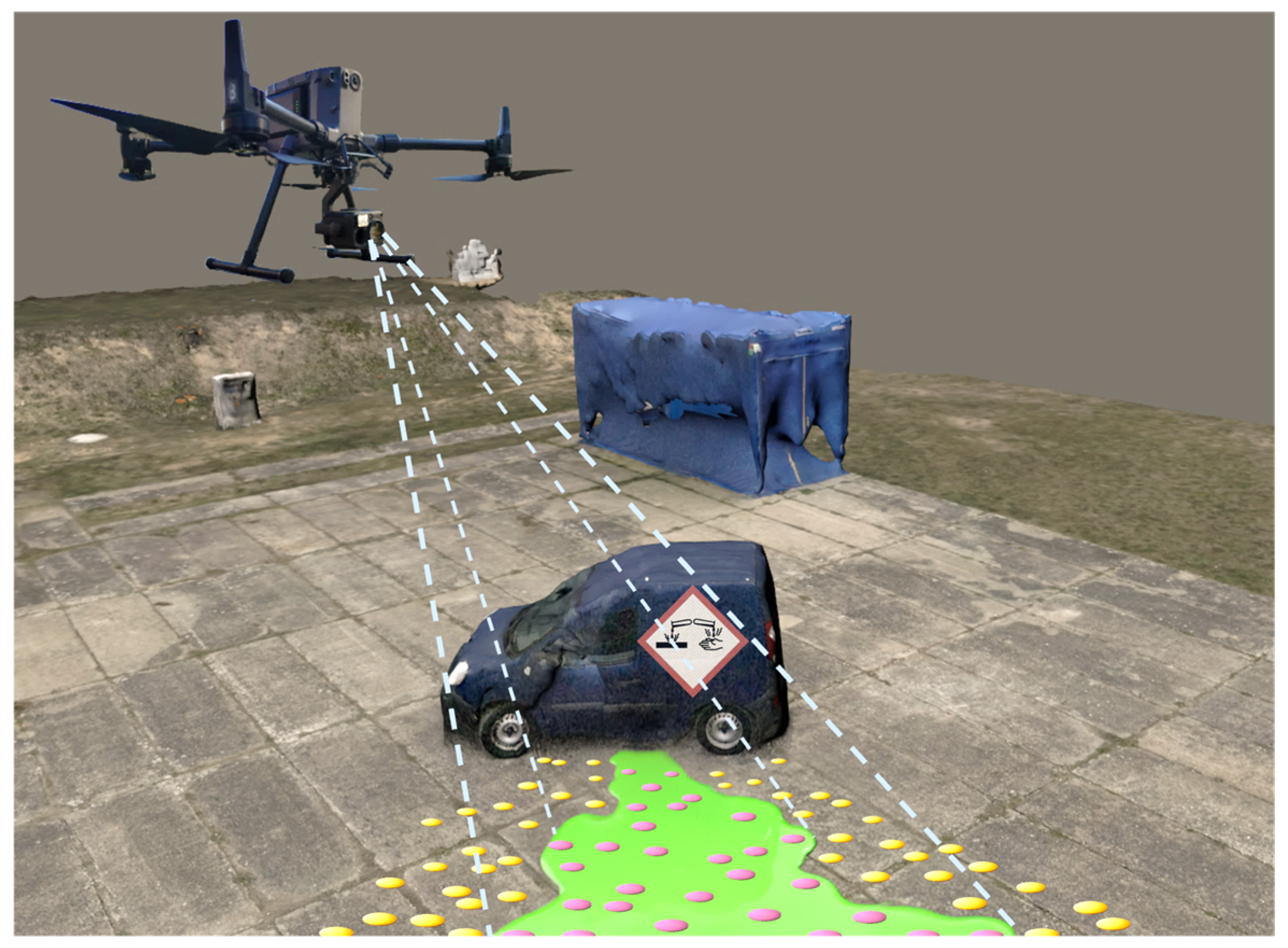






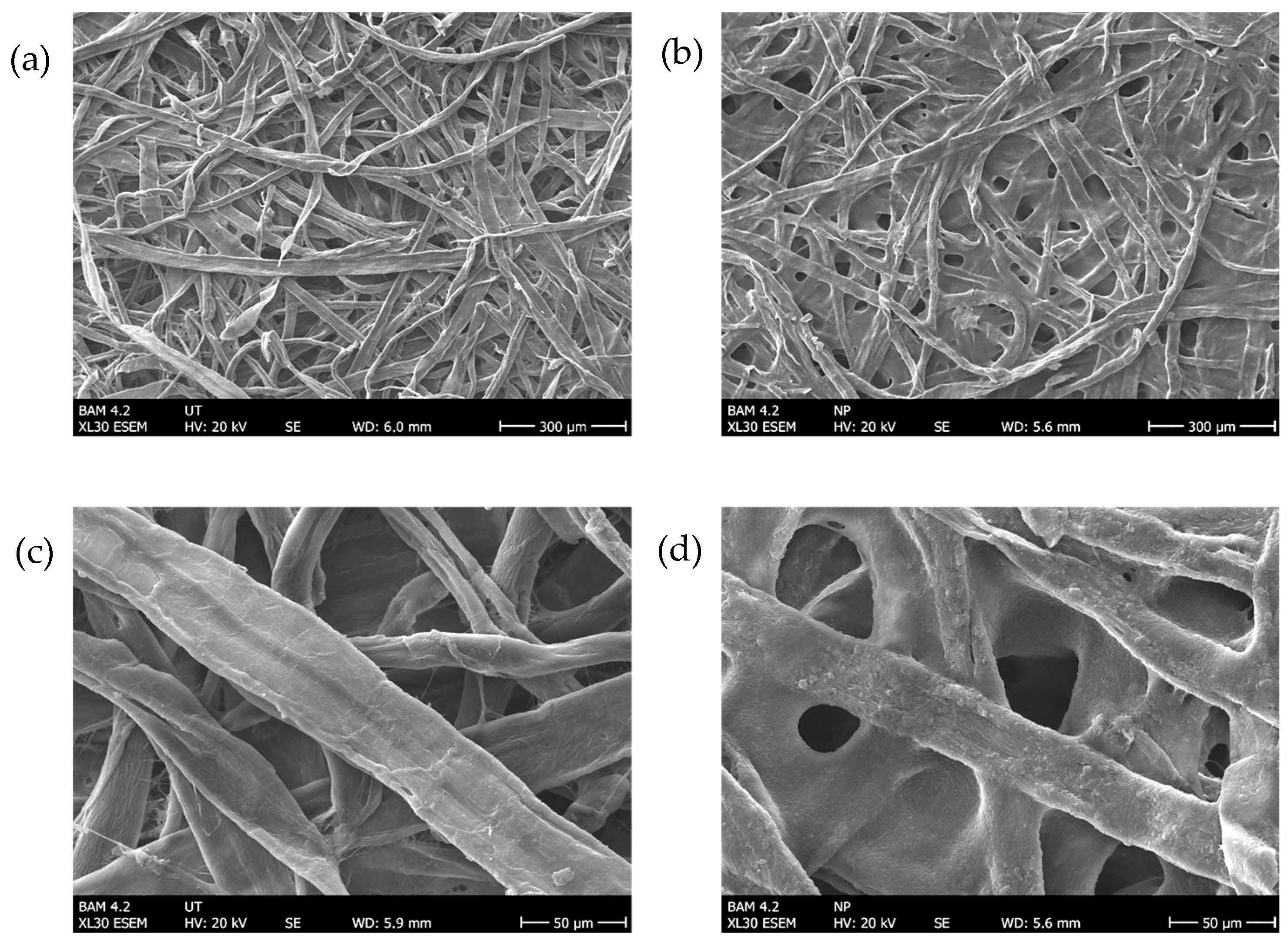
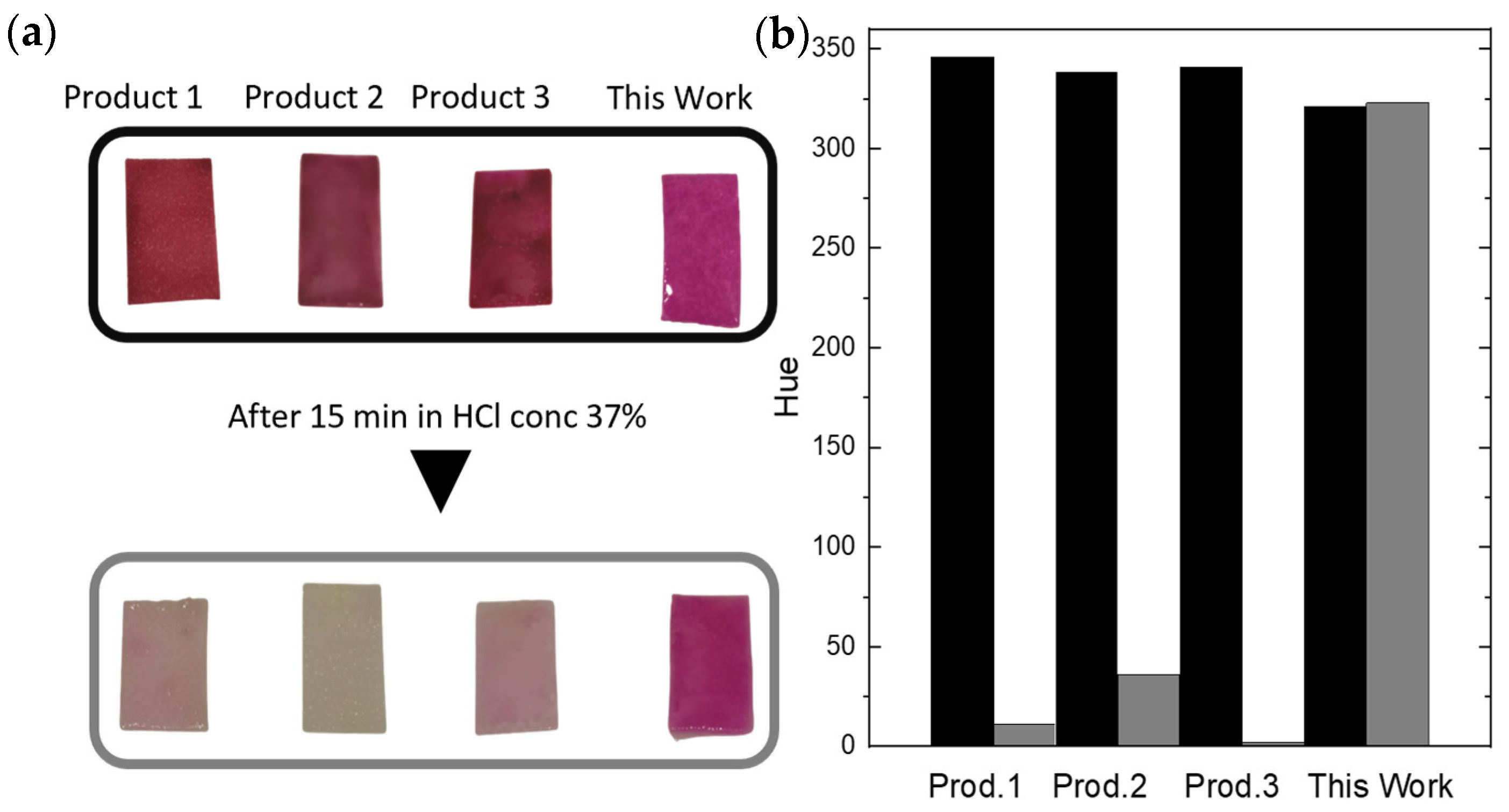
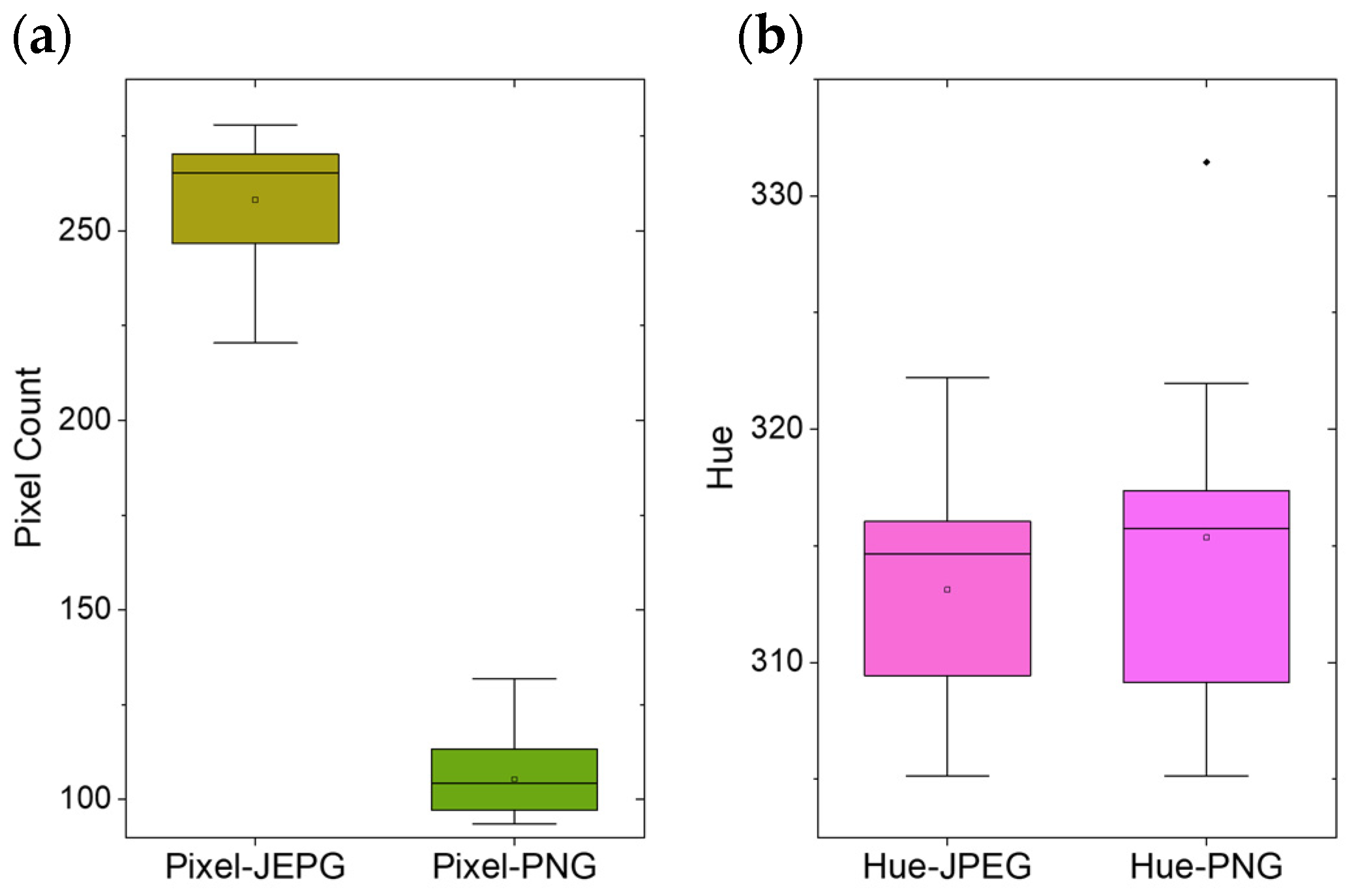
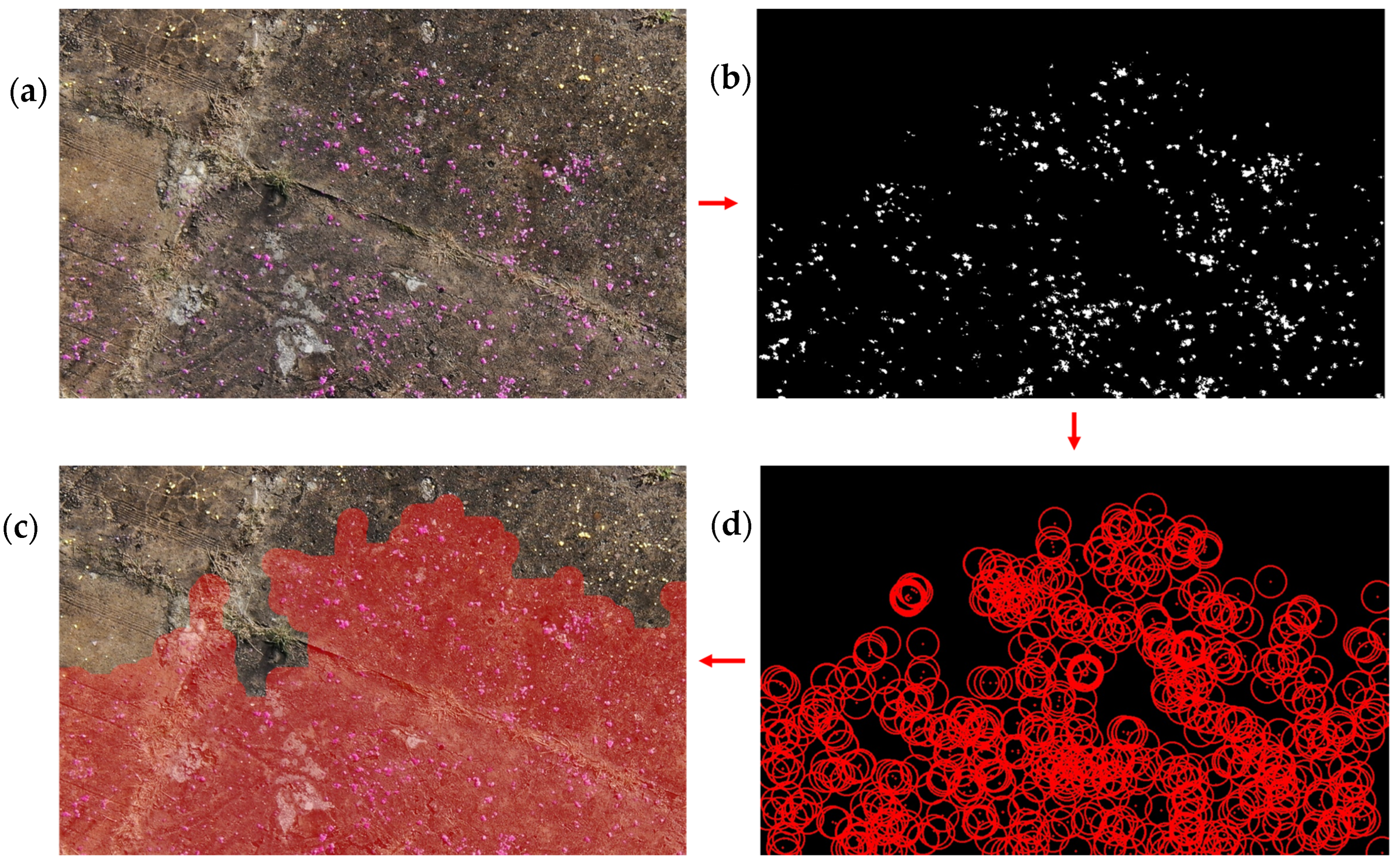
| Lower Limit | Upper Limit | Range | |
|---|---|---|---|
| Hue | 293 | 356 | 0–359 |
| Saturation | 95 | 213 | 0–255 |
| Value | 73 | 255 | 0–255 |
| Hue pH < 1 1st Batch | Hue pH < 1 2nd Batch | Hue pH = 7 1st Batch | Hue pH = 7 2nd Batch | Hue pH > 13 1st Batch | Hue pH > 13 2nd Batch | |
|---|---|---|---|---|---|---|
| Mean | 319.01 | 319.96 | 49.15 | 50.12 | 224.11 | 220.04 |
| SD | 0.582 | 1.542 | 0.378 | 0.225 | 2.168 | 8.594 |
Disclaimer/Publisher’s Note: The statements, opinions and data contained in all publications are solely those of the individual author(s) and contributor(s) and not of MDPI and/or the editor(s). MDPI and/or the editor(s) disclaim responsibility for any injury to people or property resulting from any ideas, methods, instructions or products referred to in the content. |
© 2024 by the authors. Licensee MDPI, Basel, Switzerland. This article is an open access article distributed under the terms and conditions of the Creative Commons Attribution (CC BY) license (https://creativecommons.org/licenses/by/4.0/).
Share and Cite
Nerger, T.; Neumann, P.P.; Weller, M.G. Drone-Based Localization of Hazardous Chemicals by Passive Smart Dust. Sensors 2024, 24, 6195. https://doi.org/10.3390/s24196195
Nerger T, Neumann PP, Weller MG. Drone-Based Localization of Hazardous Chemicals by Passive Smart Dust. Sensors. 2024; 24(19):6195. https://doi.org/10.3390/s24196195
Chicago/Turabian StyleNerger, Tino, Patrick P. Neumann, and Michael G. Weller. 2024. "Drone-Based Localization of Hazardous Chemicals by Passive Smart Dust" Sensors 24, no. 19: 6195. https://doi.org/10.3390/s24196195
APA StyleNerger, T., Neumann, P. P., & Weller, M. G. (2024). Drone-Based Localization of Hazardous Chemicals by Passive Smart Dust. Sensors, 24(19), 6195. https://doi.org/10.3390/s24196195








